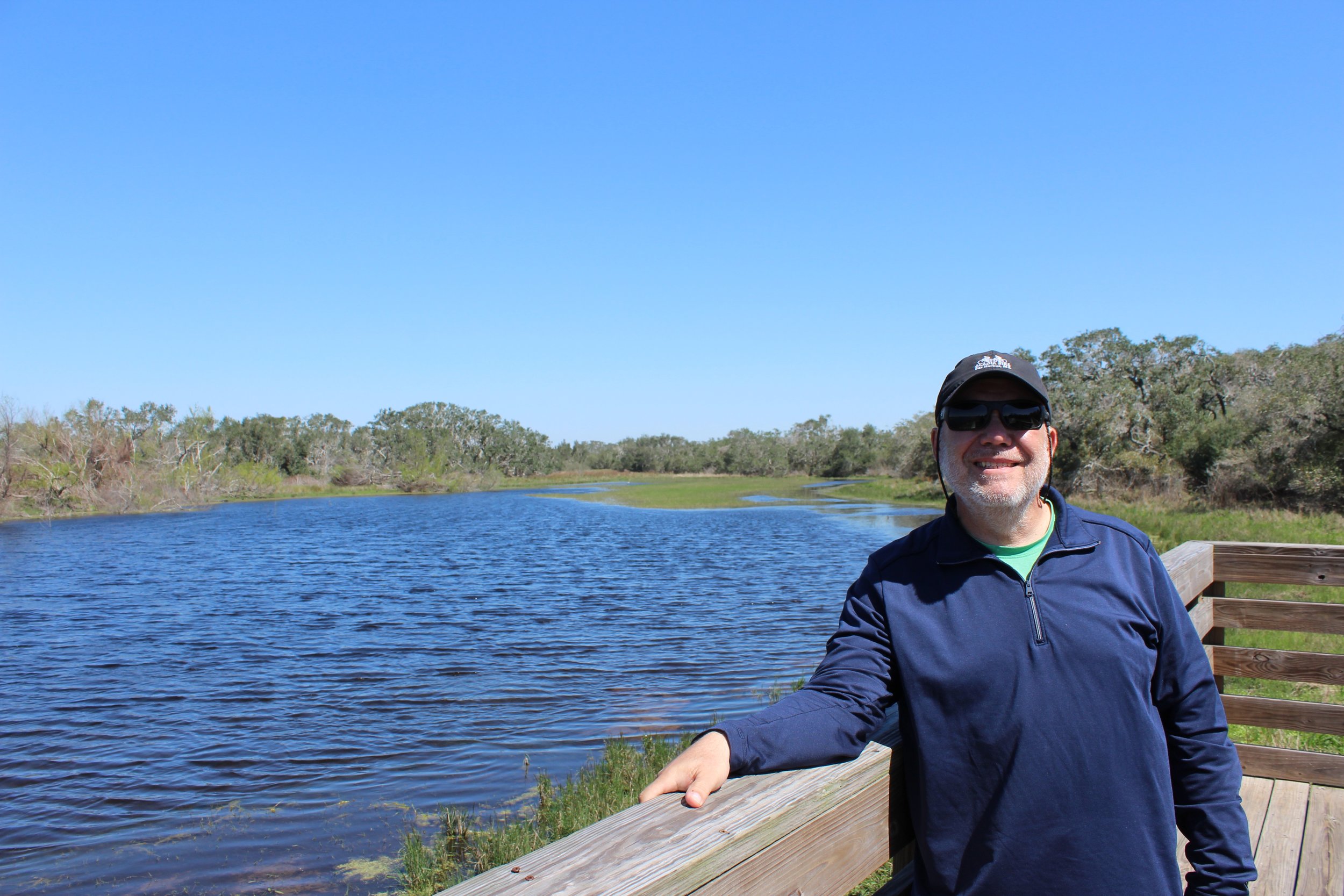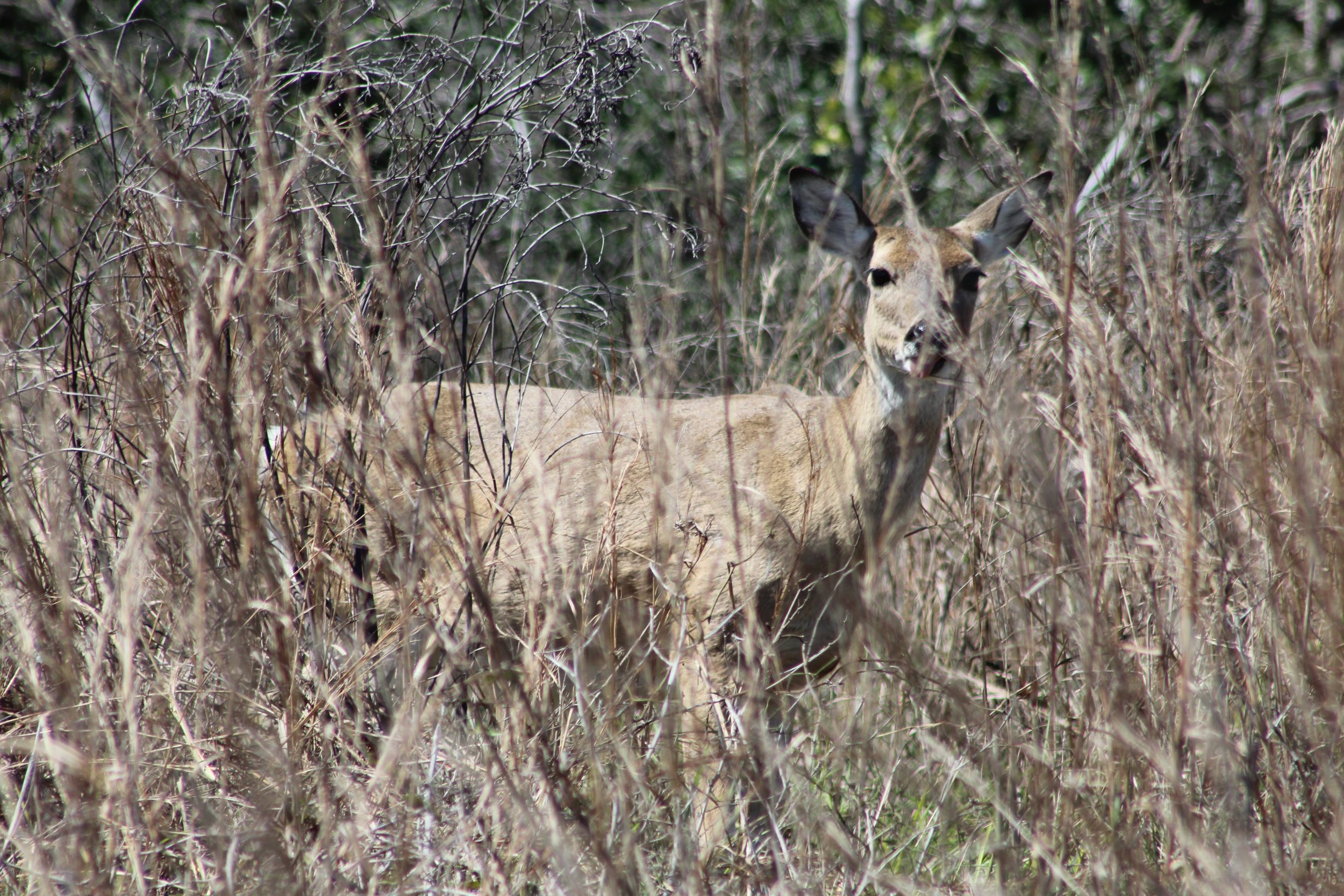Aransas National Wildlife Preserve
One of the things we’re definitely enjoying about working at Texas Lakeside RV Resort is the opportunity to meet and interact with such a wide variety of guests at our park. Our guests are full of interesting stories, interesting opinions and timely suggestions of sights we should see or things we should do. One such suggestion came to us from a couple who stayed at our park for a couple of nights at the end of February. They had stayed at Texas Lakeside RV Resort in the past and were back for another visit. As much as they enjoy staying at Texas Lakeside, they were really back in the area for a photographic opportunity. You see, Dave is an amateur photographer who enjoys birding as well. And according to Dave there is nothing more impressive than going to Aransas National Wildlife Preserve and seeing the whooping cranes who call the Preserve home during the winter months. He went on to explain that the whooping cranes migrate to the Texas coast for the winter months before heading north and spending the summer months in Northwest Canada. The whooping crane was endangered and close to becoming extinct in the 1940’s, when, the population was down to 21 wild and 2 captive birds. As of 2015, there were reportedly 603 of these impressive creatures, including 161 in captivity. And to top it all off, Dave emphasized that we only had a couple of weeks before the birds would begin their summer migration north. As he said, “Aransas is the only place in the country you can go to see these birds, unless you happen to encounter them during their northern migration thru the center of the United States.
So, with that sort of background story, Betsy and I decided it would be well worth taking one of our days off of work to explore the Aransas National Wildlife Preserve and search out the whooping crane. Aransas National Wildlife Refuge is a 114,657 acre protected area situated on the southwest side of San Antonio Bay along the Gulf Coast of Texas. The Aransas National Wildlife Refuge was established by Executive Order in 1937 by President Franklin D. Roosevelt as the Aransas Migratory Waterfowl Refuge. It was as a refuge and breeding ground for migratory birds and other wildlife. Roosevelt issued a proclamation in 1940 changing the name to the Aransas National Wildlife Refuge.
On Wednesday Betsy packed up her camera and a small lunch and we headed out for the hour long drive to the Preserve. We arrived late morning and proceeded through the gate, following signs to the Welcome Center. Betsy had read that the building which housed the offices and Welcome Center had been damaged during Hurricane Harvey last year, and had not yet reopened. However, directly across the driveway was a well-marked, temporary building which was serving as the official Welcome Center. We parked and made our way over to the temporary building. Inside was the standard collection of maps, brochures and pictures describing the animals and wildlife that called Aransas home. The lady working behind the counter was extremely nice (we need to get better at remembering names!) and gave us some suggestions for exploring the Preserve. While we were talking she took notice of the hat I was wearing from Acadia Bike in Bar Harbor, ME. She smiled and said, “Hey, I know that place. I’m from there.” Her comment led to an extended conversation about Mt. Desert Island, Bar Harbor, how much we loved our time there last summer, and the fact that she was going back this summer to work at Oli’s Trolley in Bar Harbor. She also mentioned that she would be staying at Narrows Too Campground, our home last summer, and Annette and Mike’s home again this summer. We thanked her for her assistance and headed out into the Preserve.
Our first stop was a short distance from the office at a small boardwalk overlooking some water and marshland. The area was appropriately named “Alligator Viewing Area”. It wasn’t that large, but the sign warning us of alligators was what convinced us to stop. After seeing alligators quite often last winter during our time in Florida, we found ourselves missing them. After some examination, we spotted a small gator on the edge of the water. Betsy’s excitement seemed odd, but was understandable.
From there we continued down the road and made the recommended stop at Jones Lake. There was an observation deck on the edge of the water which allowed for a great view of the lake. Jones Lake is fresh water and it relies on rainfall to maintain its water level, meaning the lake disappears in the dry summer months. From the deck we spotted a couple of more gators in the distance, a variety of birds and even a javelina across the water on the other shore.
From Jones Lake we continued towards the Observation Towers on the edge of San Antonio Bay. When we arrived we discovered a 20-foot tower and a 40-foot tower. It was apparent there had been some damage to the boardwalks in the area as we ascended the ramp to the smaller of the two towers. The tower provided a nice view of the Bay and the surrounding marshland. We then made our way up the series of ramps to the top of the larger, 40-foot tower. The views were obviously better here and we scanned the area for our chance to see a whooping crane. There, in the distance, were three whooping cranes in the marshy water, where they appeared to be feeding on some of the local seafood. Even with their large size, up to 5 feet tall and a wingspan of up to 7 1/2 feet, it was difficult to get a good perspective from this distance. We observed them for a while, but they had no plans of coming any closing, and we were not able to make our way into the bay. A few pictures from a distance would have to suffice. We won't win any photography awards with these, but we can now say we have saw Whooping Cranes in the wild! Remember how I talked about Betsy packing her camera and lunch? What she didn't pack was binoculars and boy was she mad about that. Our binoculars are nothing to write home about, but they sure would have helped in a situation like this.
Leaving the towers we made our way through the preserve on the approximately 9.5 mile Auto Tour Loop without seeing much in the way of wildlife. We were both getting a little hungry so we found a parking spot overlooking the fishing pier on San Antonio Bay and enjoyed a lite lunch overlooking the water. Before exiting the Preserve, we made one last stop to explore on of the numerous trails between the road and the water. We were rewarded with another small gator sighting, some cool fish, colorful ducks, peeping frogs, and plenty of mosquitos! Must be our queue to go.
Back to the car and headed back to our home in Port Lavaca. Overall, a fun way to spend a nice sunny day on the Texas coast. Oh, and I forgot to mention, to make it all better, there were no entry fees since the season hadn’t started yet! Chalk that one up to good timing






















